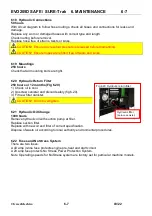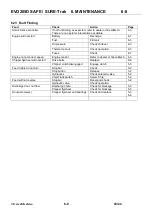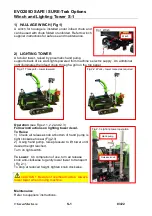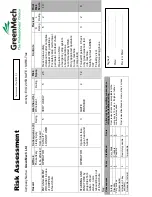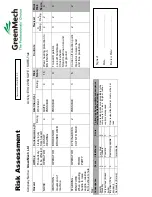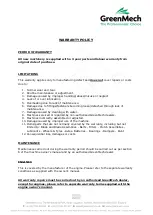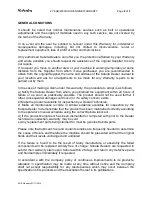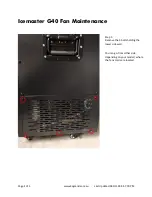
•
The PTO shaft is fitted with a suitable
guard complying with EN1152, that
encloses the shaft along its full length
from tractor to machine.
•
The guard is correctly fitted and in
effective working ordersee AIS40
Power
take-offs and power take-off drive shafts;
•
The PTO speed is suitable for the
machine.
SELECTING THE WORK AREA
11.
Select as firm a surface as possible and
stabilise the machine
12.
Ensure ventilation is adequate and any
exhaust fumes are vented into open air if
working in an enclosed space.
13.
Where appropriate, if the chipper is
detached from the tow vehicle, apply the
handbrake and, if necessary, chock the
wheels.
14.
On all reasonably foreseeable approaches
to the worksite, erect warning and
prohibition signs conforming to the Health
and Safety (Safety Signs and Signals)
Regulations 1996, indicating a hazardous
worksite and that unauthorised access is
prohibited. In areas of very high public
access, a risk assessment may
indicate that
additional controls (e.g. barrier tape,
barriers, extra manning) are required.
15.
Ensure all operations near to highways are
adequately signed with the appropriate
notices as specified in the DTLR Code of
practice
Safety at street works and road
work (available from The Stationary
Office ISBN 0 11 551958 0).
16.
Ensure that the discharge chute is
positioned to prevent chips being blown
onto the highway during roadside
operations, or in any direction where they
can affect colleagues or members of the
public.
17.
Position the chipper so that operators do
not have to stand on embankments/slopes
when feeding material into the machine
EMERGENCY PROCEDURES
18.
Ensure a designated and responsible
person knows the daily work programme
and agree with them a suitable emergency
contact procedure. Where reasonably
practicable use a mobile phone or radio
and pre-arrange call-in system.
19.
Ensure the operators can provide the
emergency services with enough detail for
them to be found in the event of an
accident, e.g. the grid reference, the
distance from the main road, the type of
access (suitable for car/four-wheel
drive/emergency service vehicles). In
urban areas street names are essential.
Know the location details before they are
needed in an emergency. (Also see AFAG
leaflet 802 Emergency Planning)
OPERATION
20.
Make sure the cuffs of gloves are close
fitting or tucked into you’re sleeves to
stop them being caught on material as it is
fed into the chipper.
21.
Set the engine speed (and set the stress
control if fitted) to obtain optimum
performance.
22.
Check that material to be chipped is free
from stones, metal and foreign objects.
23.
Stand to one side of the infeed rollers to
avoid being hit by ejected material.
24.
Let material go as soon as it is engaged in
the infeed rollers or chipping components.
Page 2



